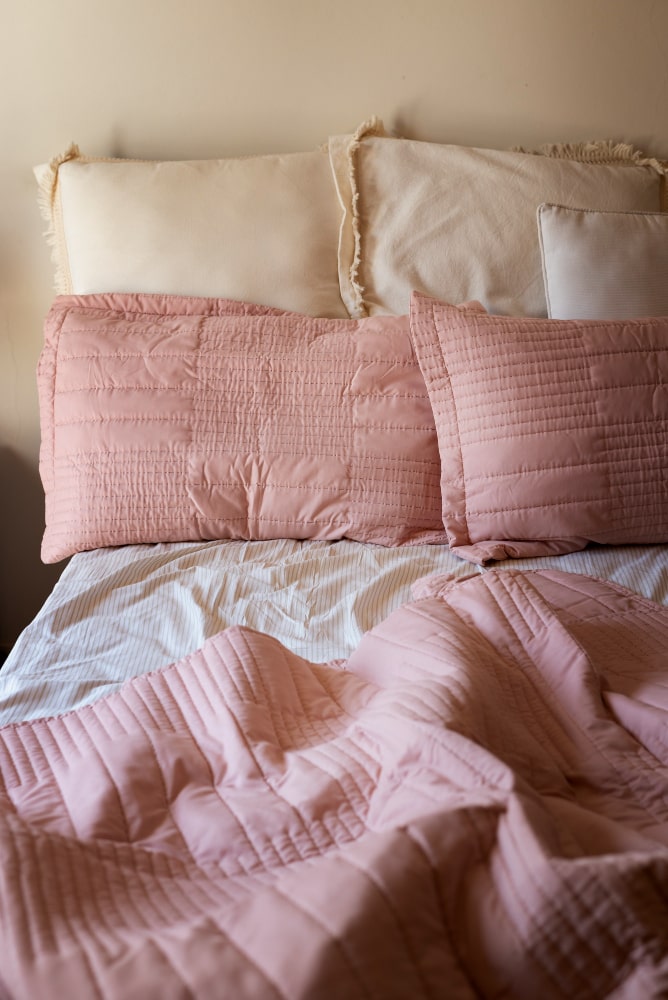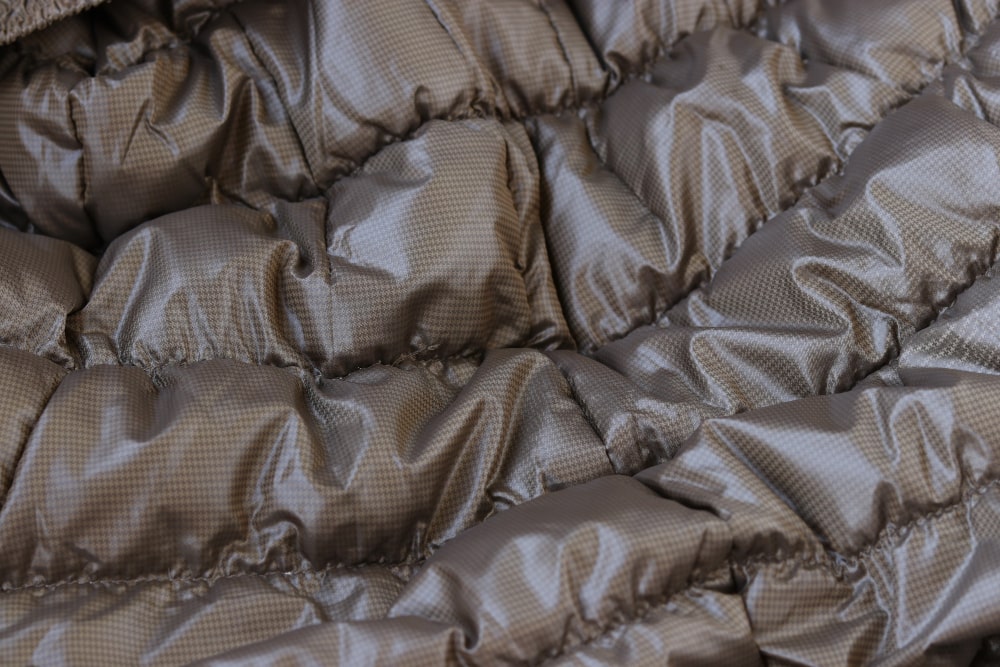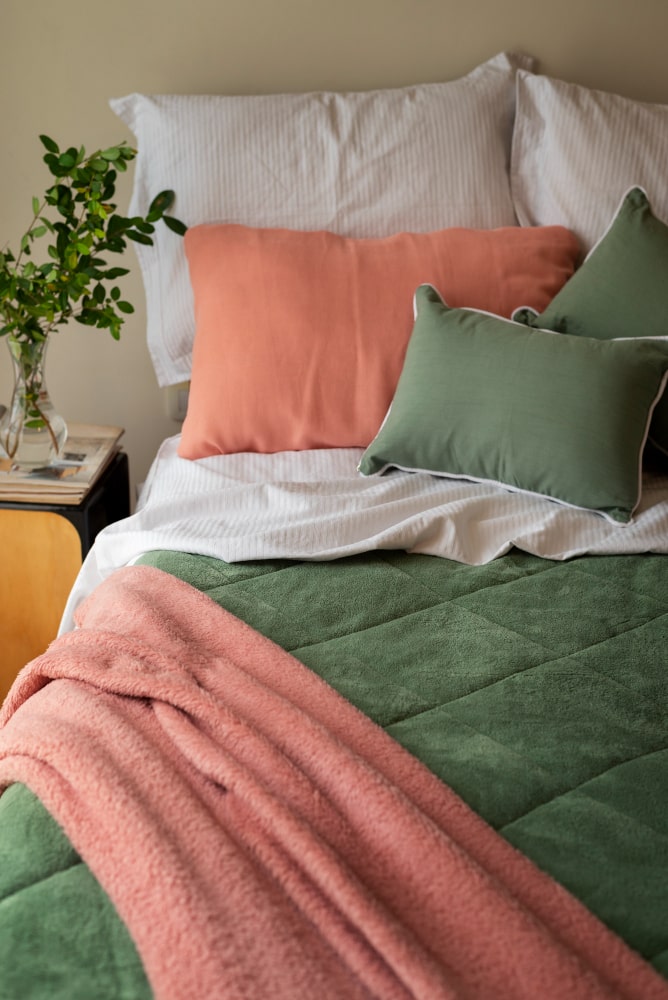
Have you ever wondered which type of quilt is best for which weather? With so many options like cotton, wool, silk, down, synthetic, and quilted comforters, it can be tricky to choose the right one. Each material has its own advantages and disadvantages when it comes to breathability, insulation, maintenance, and overall comfort. A lightweight cotton quilt might be perfect for a hot summer night, while a warm wool quilt is ideal for frigid winter weather.
Silk quilts offer luxurious softness for milder climates, and down provides exceptional warmth without bulk. Synthetic quilts are affordable and easy to clean, making them great for everyday use. Quilted comforters are versatile and can be used alone or layered. The right quilt for you depends on the climate you live in and what feels most comfortable. Let’s take a closer look at the pros and cons of each so you can determine which type of quilt is ideal for your home.
Read for More Lifestyle Ideas: https://cityfurnish.com/blog/category/lifestyle
A- Choosing the Best Type of Quilt for Each Season
1- For Hot Summer Nights, Cotton Quilt is King

If you want to stay cool and comfortable on sultry summer nights, a cotton quilt is the perfect choice. Cotton is highly breathable, allowing for airflow and circulation. It will keep you covered without making you overheat. A lightweight cotton quilt is easy to maintain – just throw it in the wash and tumble dry.
2- Wool Quilt for Winter Warmth

When the temperatures start dropping, you’ll want the natural insulation of wool. Wool quilts provide plenty of warmth without being too heavy. Wool is excellent at regulating temperature – keeping you cozy but not causing you to sweat. It’s also naturally moisture-wicking. A high-quality wool quilt can last for decades and is worth the investment.
3- Luxurious Silk Quilt for Mild Weather

For mild spring and fall weather or in generally temperate climates, a silk quilt is a luxurious option. Silk offers an unparalleled soft, smooth feel that gently drapes over the body. It provides lightweight warmth and insulation perfect for fluctuating temperatures. Silk quilts require dry cleaning to maintain their beauty and should be handled gently, but for opulence and comfort, silk can’t be beat.
4- Down Quilt Without the Bulk

For superior insulation without excess bulk, down quilts are an excellent choice. The lofty clusters of down feathers trap air and provide an exceptional amount of warmth for their weight. Although more expensive, down quilts are very durable and long-lasting when properly cared for. They are suitable for colder weather but can be used year-round in well-insulated homes. An occasional fluffing helps down quilts retain their loftiness.
5- Easy-Care Synthetics Quilt

For affordable, low-maintenance bedding, quilts filled with polyester or other synthetic materials are convenient and budget-friendly. Synthetic quilts are machine washable, quick to dry and available in a range of weights suitable for any climate. They may not last as long as natural fiber quilts but are ideal for daily use, especially in busy households. With a variety of stylish patterns and colors available, synthetic quilts can suit any decor.
B- Pros and Cons of Different Quilt Materials: Cotton, Wool, Silk, Down & Synthetic
1- Cotton Quilts
Cotton quilts are ideal for summer and warmer weather thanks to their breathable nature. Easy to care for and machine washable, cotton provides lightweight warmth without causing you to overheat. However, cotton quilts may not be insulating enough for colder winter nights.
2- Wool Quilts
Wool quilts are perfect for cold weather and winter. Wool is excellent at retaining heat and keeping you warm while also wicking away moisture. Although wool quilts tend to be more expensive and require professional cleaning, they are extremely durable and long-lasting.
3- Silk Quilts
For mild weather, silk quilts offer an ultra-luxurious feel that is soft, smooth and lightweight. Silk quilts provide gentle warmth and are ideal for those with sensitive skin. However, silk quilts typically require dry cleaning to maintain their quality and may not be warm enough for colder temperatures.
4- Down Quilts
Down quilts provide exceptional warmth for their weight. The lofty down filling traps air and insulates effectively. Although down quilts can be used year-round, they work best in cold weather and may require occasional fluffing to maintain their loft. Down quilts tend to be more expensive, but for many the unparalleled comfort is worth the investment.
5- Synthetic Quilts
Synthetic quilts, like polyester quilts, are affordable, easy to care for and suitable for daily use. Available in different thicknesses for various weather conditions, synthetic quilts are machine washable, quick drying and ideal for busy households. However, synthetic quilts may not last as long or feel as luxurious as natural fiber quilts.
In the end, the best quilt for you depends on the climate you live in and your specific needs for comfort and convenience. With so many great options available, there’s a perfect quilt out there for everyone.
C- Quilt Types FAQs: Answering Common Questions About Blankets Online & Comforters Online
1- What types of quilts are best for hot weather?
For warm summer nights, opt for a lightweight quilt like cotton or silk. Cotton is breathable and helps you stay cool, while silk is luxuriously smooth and temperature-regulating. Both are ideal for hot and humid weather. Avoid down or wool quilts which can cause overheating.
2- What about quilts for winter or cold weather?
If you live in a colder climate or just want extra warmth, a down, wool or thick synthetic quilt is perfect. Down and wool provide excellent insulation for the weight, trapping body heat close to you. Synthetic quilts like polyester can also be quite warm and are more budget-friendly. For the coldest winter nights, consider layering a lightweight quilt under a warmer option.
3- How do I care for different quilt types?
The care required depends on the quilt filling and shell materials. Cotton, silk and synthetic quilts can typically be machine washed and dried on low heat, making them easy to maintain. Wool and down quilts usually require professional dry cleaning to avoid damage, so keep that in mind. When in doubt, check the care label for specific instructions. Proper care will help your quilt last for many cozy years to come.
4- What size quilt do I need for my bed?
Choose a quilt that is one size larger than your mattress for the most coverage and comfort. For example, if you have a queen size bed, opt for a king size quilt. A quilt that is too small won’t cover you adequately, while an oversized quilt allows you to wrap up snugly. You can also consider a quilt with extra length for more foot coverage. The right size quilt paired with your perfect fill will ensure you sleep comfortably through the night.
Take Away
So there you have it – the lowdown on the types of quilts and which one is best for your cozy needs. Whether you want breathable cotton for summer, toasty wool for winter, luxurious silk for milder temps, lofty down for extra warmth, easy-care polyester for daily use, or versatile comforters that can be layered, you now know how to pick the perfect quilt for any weather or sleeping situation.
Choose the one that best suits your climate, lifestyle and budget so you can stay as snug as a bug all year round. And when in doubt, remember you can always layer lighter quilts for extra warmth or remove layers when it gets too toasty. With this quilt intel in your back pocket, you’ll be sleeping soundly through any season. Sweet dreams!

